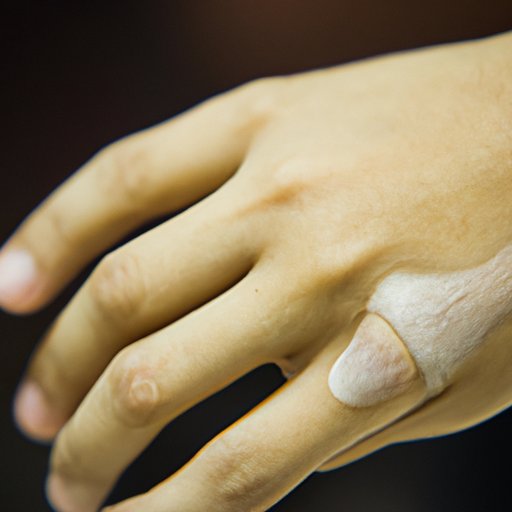Introduction
Cysts are growths that can occur anywhere in the body, and they are a common occurrence for many people. While some cysts are harmless and may even go away on their own, others can be bothersome, painful, or even dangerous. The purpose of this article is to provide information and advice on how to get rid of cysts and their associated symptoms.
What is a Cyst?
A cyst is a closed sac that can appear anywhere in the body. It is usually filled with fluid, air, or other substances, and it can vary in size from very small to quite large. Cysts can form on or under the skin, in organs like the ovaries or kidneys, or in the bones and joints.
While some cysts are painless and harmless, others can cause discomfort, pain, or other symptoms. For instance, sebaceous cysts, which typically occur on the skin, can become inflamed and infected, leading to redness, tenderness, and drainage. Ovarian cysts, on the other hand, can cause pain, bloating, and irregular menstruation. Ganglion cysts, which often appear on the hands and wrists, can cause stiffness and discomfort when moving.
At-Home Remedies for Reducing the Size of a Cyst or Relieving Pain
If you are dealing with a cyst, there are some at-home remedies that you can try to help reduce its size or ease any pain you may be experiencing. One of the most common remedies is to use a warm compress, which can help increase circulation and promote healing. To use a warm compress, simply soak a clean washcloth in warm water, wring it out, and apply it to the affected area for 15-20 minutes, several times a day.
Another home remedy that many people find helpful for cysts is tea tree oil. This essential oil has anti-inflammatory and antimicrobial properties that can help reduce inflammation and prevent infection. To use tea tree oil, mix a few drops with a carrier oil like coconut oil or olive oil, and apply it directly to the cyst using a clean cotton ball or swab. Be sure to dilute the tea tree oil to avoid irritation.
Tight clothing can aggravate cysts, so it is important to wear loose-fitting clothing that does not irritate the skin. Additionally, maintaining good hygiene can help prevent infection and reduce inflammation. Avoid picking at or popping a cyst, as this can cause further irritation and increase the risk of infection.
When to Seek Medical Treatment for a Cyst
If your cyst is causing you significant pain or discomfort, or if it is growing rapidly, it is important to seek medical treatment. Your doctor may recommend a variety of treatment options, depending on the type and severity of the cyst. One common treatment is draining the cyst, which involves using a sterile needle or scalpel to remove the fluid or other material inside the cyst. This is typically done in a doctor’s office and may be done under local anesthesia.
If the cyst is particularly large or problematic, your doctor may recommend surgical removal. This involves cutting into the cyst and removing it, along with any surrounding tissue if necessary. In some cases, medication may also be prescribed to help reduce inflammation or prevent infection.
It is important to weigh the benefits and risks of any treatment option before making a decision. While some treatments may be highly effective, they can also be costly and carry a risk of complications. Be sure to discuss all of your options with your doctor and ask any questions you may have.
Personal Story of Someone Who Has Dealt with a Cyst
To get a personal perspective on dealing with cysts, we spoke with Jane, a 35-year-old woman who has experienced several ovarian cysts in the past. “It was really scary at first because I had never dealt with anything like that before,” she recalls. “But my doctor was really helpful in explaining my options and helping me decide what to do.”
Jane ultimately opted for surgical removal of her cyst, which was causing her significant pain and discomfort. “It was a scary experience, but I feel so much better now that it’s gone,” she says. “If anyone else is dealing with a cyst, I would encourage them to talk to their doctor and not be afraid to ask questions.”
Resources and Links for Additional Information
If you are looking for more information on cysts and how to get rid of them, there are a variety of resources available. The National Institute of Arthritis and Musculoskeletal and Skin Diseases offers an overview of different types of cysts and their treatment options. The Mayo Clinic also provides information on when to see a doctor about a cyst, as well as common treatment options.
If you are looking for support or community, there are also various online resources available, such as the Cystic Fibrosis Foundation or the Cystic Fibrosis Trust.
Conclusion
Cysts can be a bothersome and sometimes painful condition, but there are a variety of treatment options available. Whether you opt for at-home remedies or seek medical treatment, it is important to take action and not let a cyst go untreated. Remember to speak with your doctor about any concerns you may have and to ask questions about your treatment options. With the right care and attention, a cyst can be successfully treated and managed.
